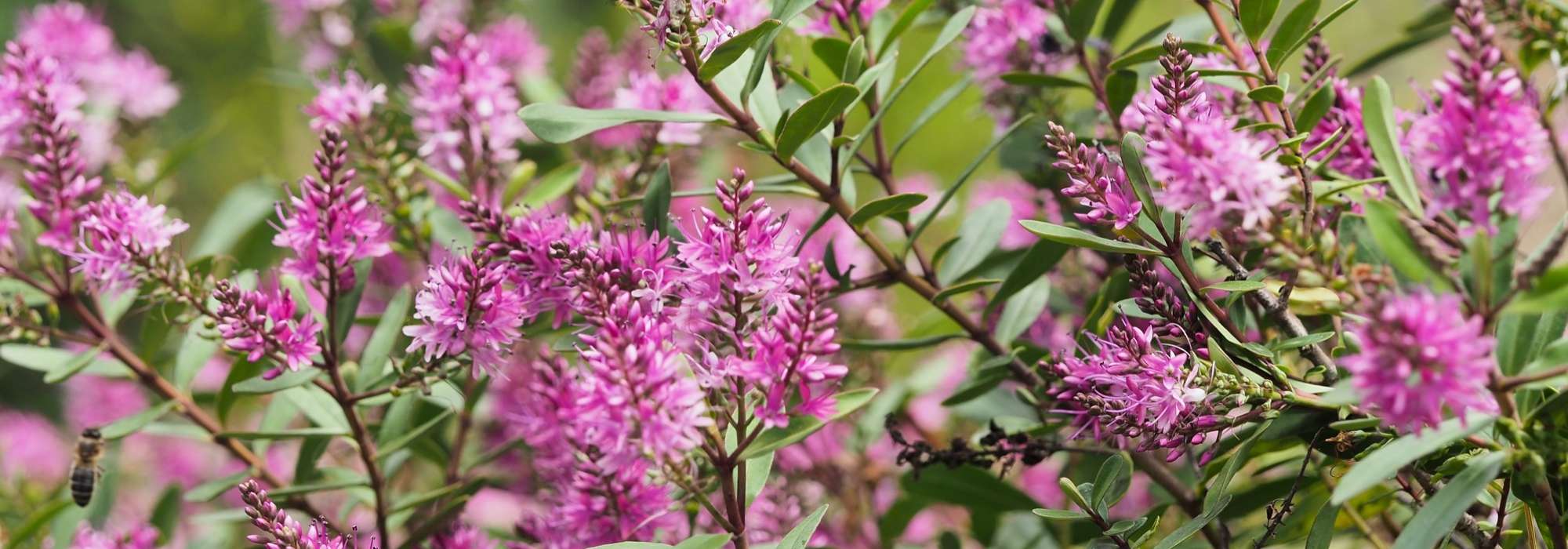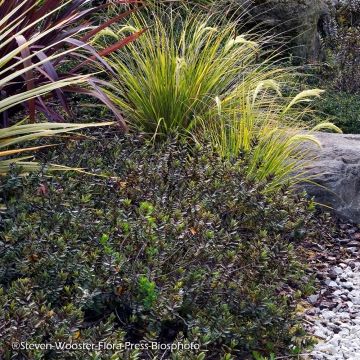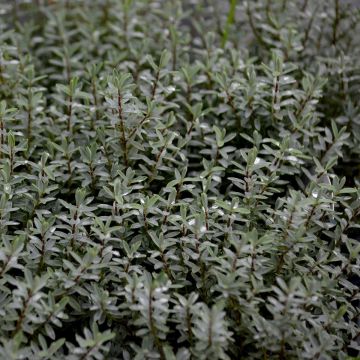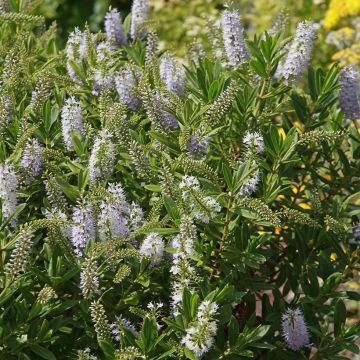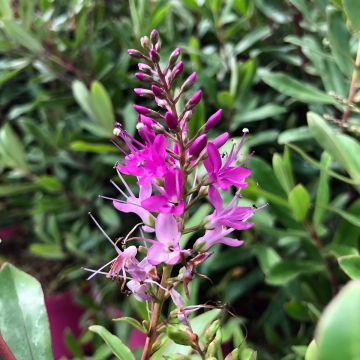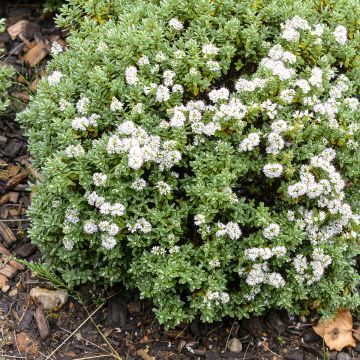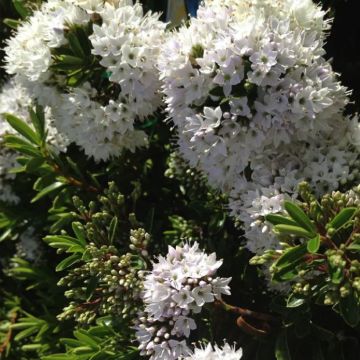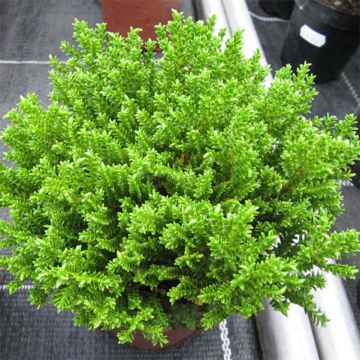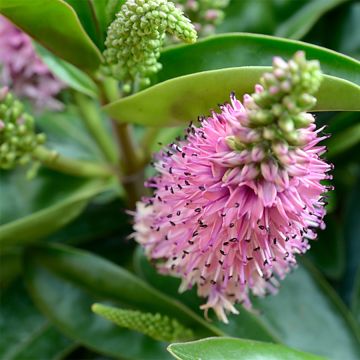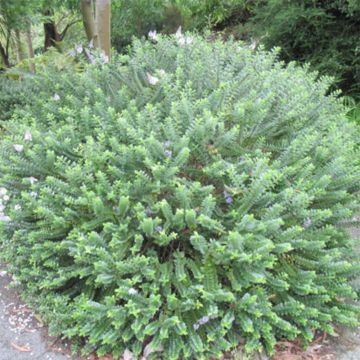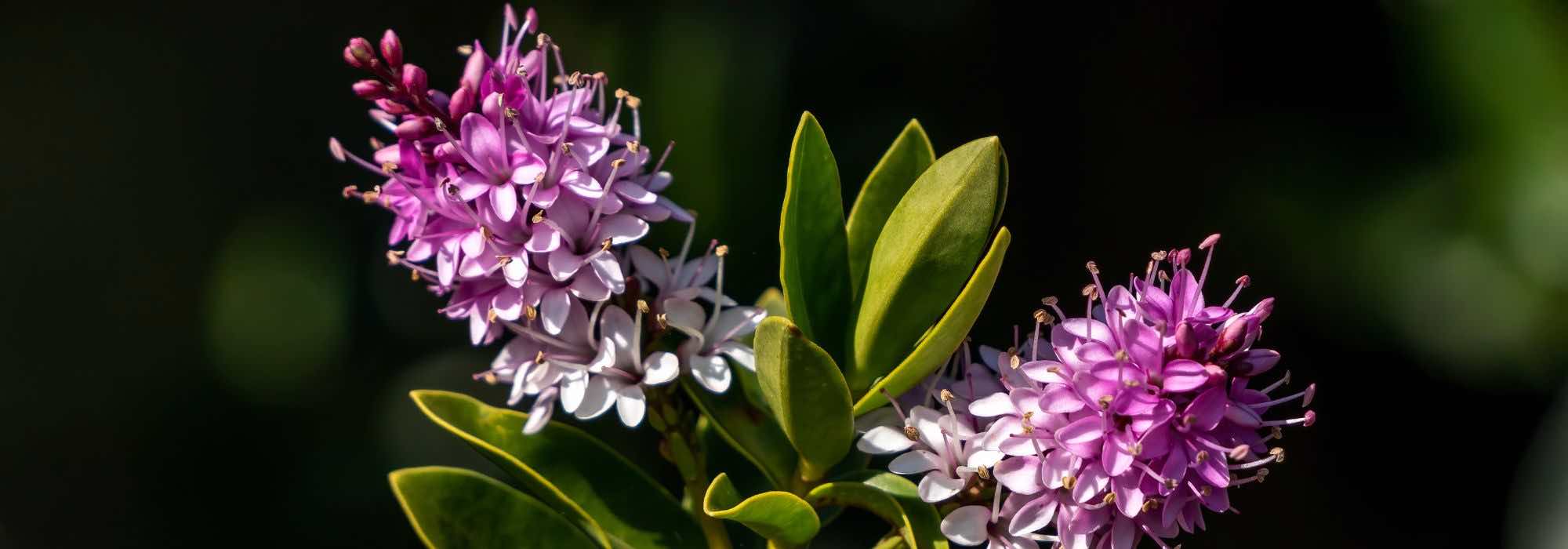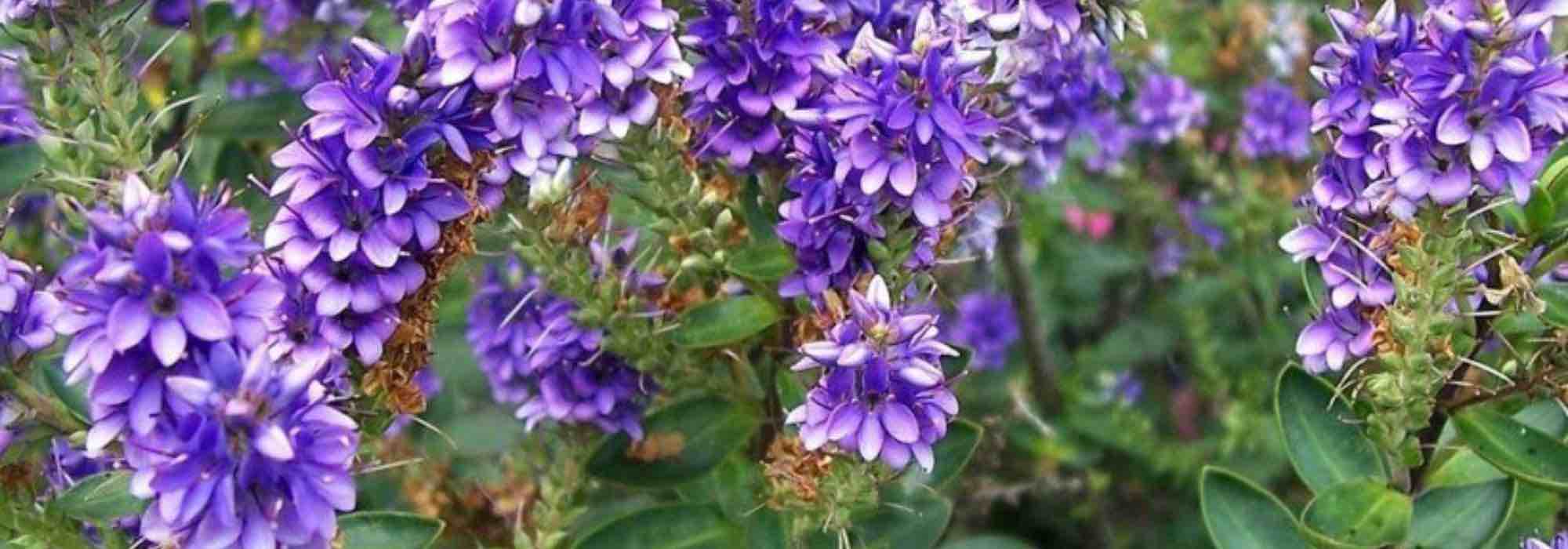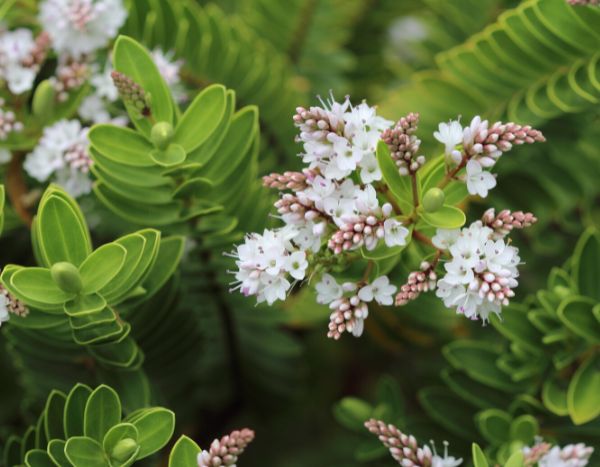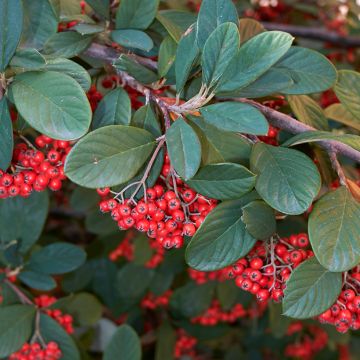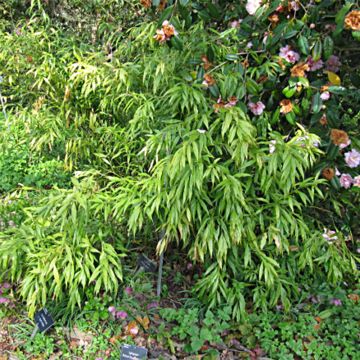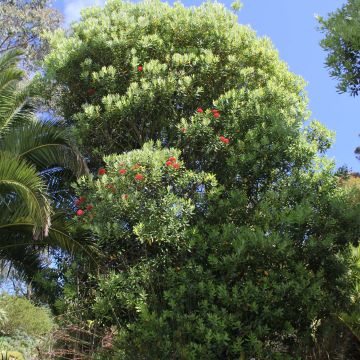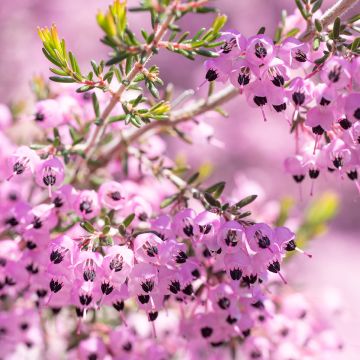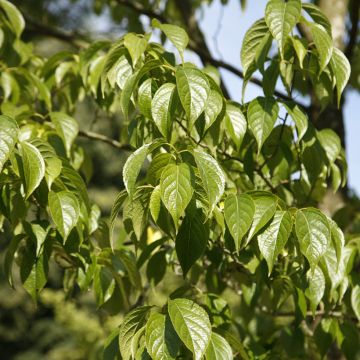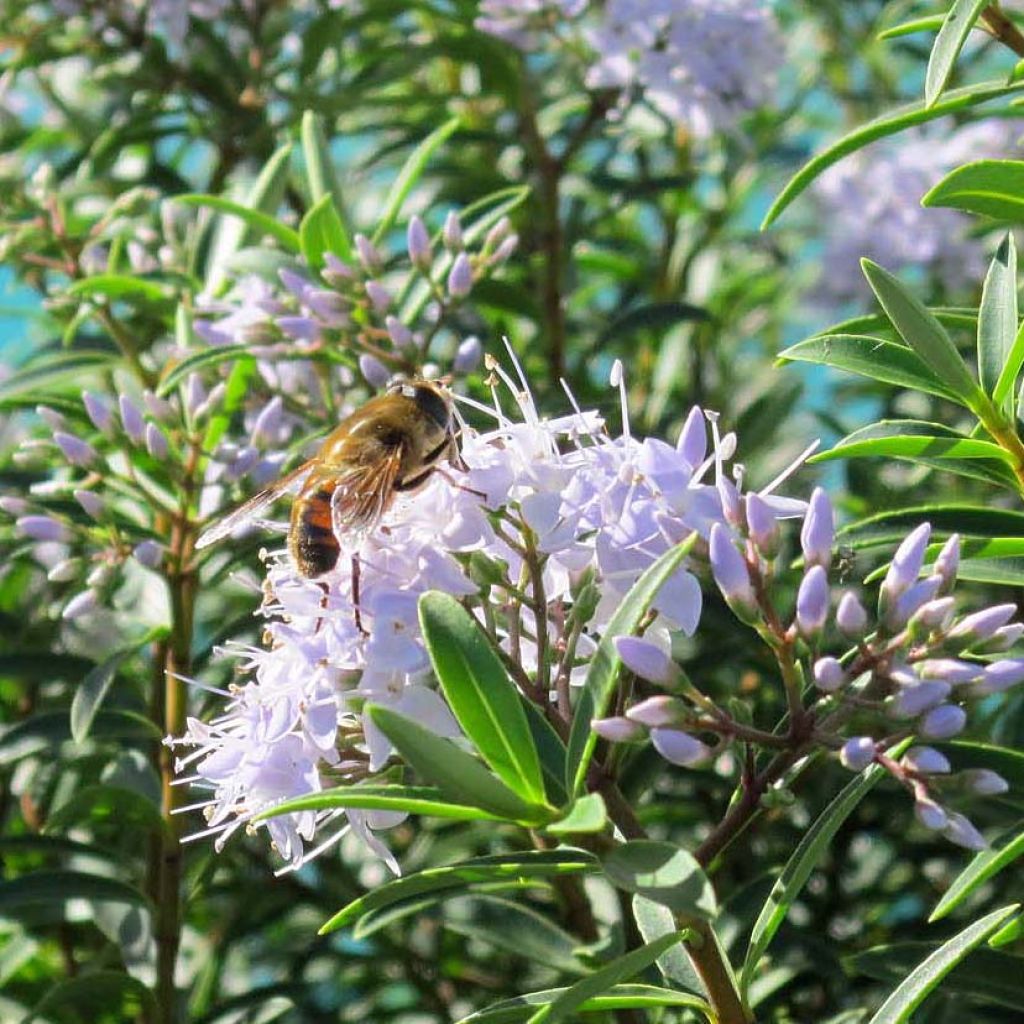

Hebe diosmifolia - Shrubby Veronica
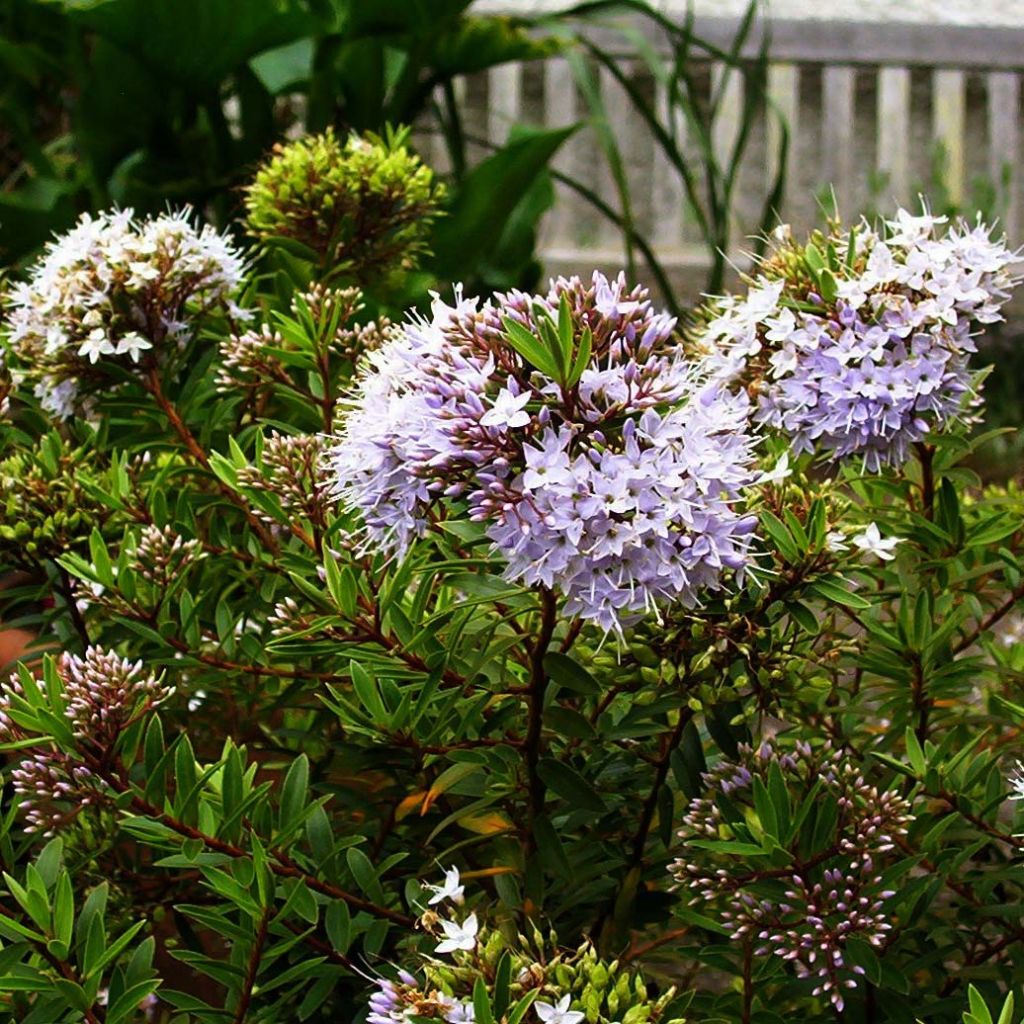

Hebe diosmifolia - Shrubby Veronica
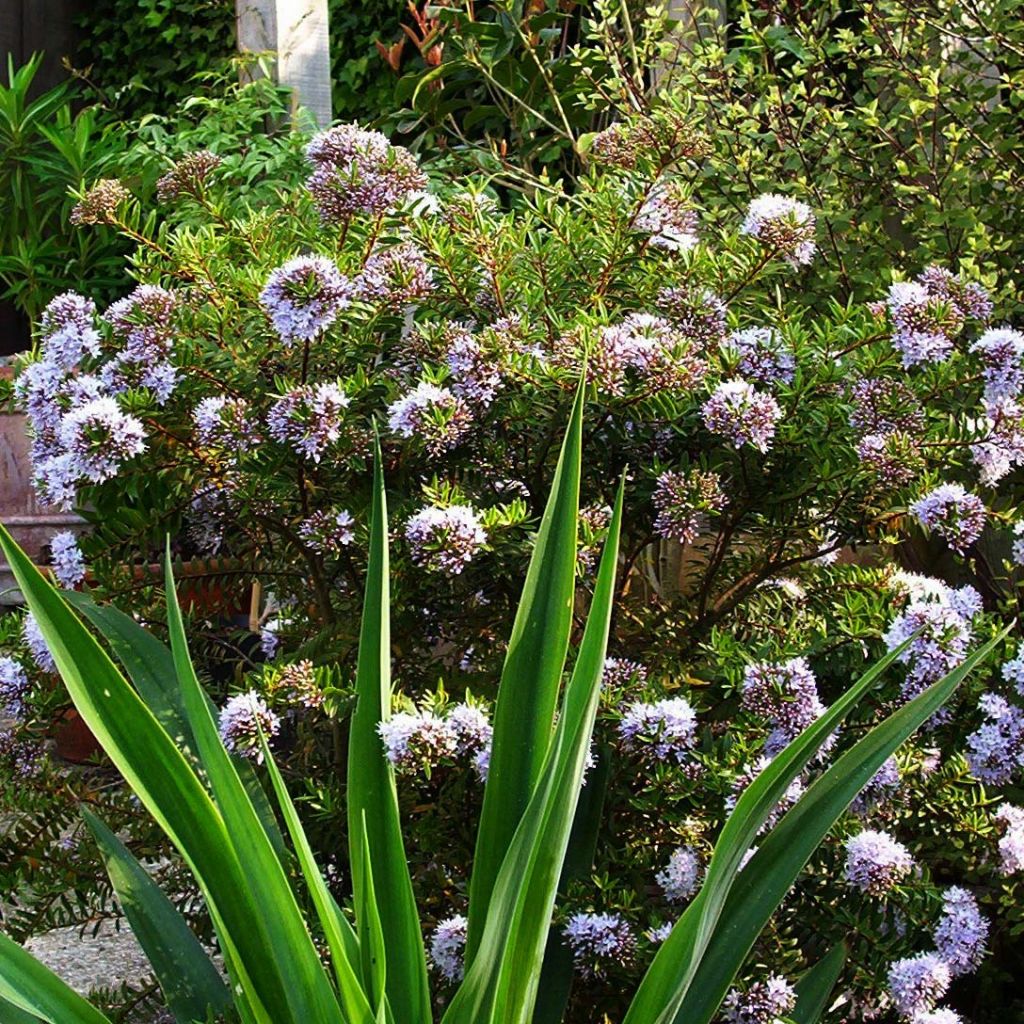

Hebe diosmifolia - Shrubby Veronica
Hebe diosmifolia - Shrubby Veronica
Hebe diosmifolia
Shrubby Veronica, Speedwell shrub
I planted this little Hebe diosmifolia in a very large pot 3 years ago, it is very light and the delicate flowering is a rather pale blue mauve. A year ago, I added a beautiful dark blue rosemary and I am very happy with the overall look as the flowerings are staggered and the pot is always pleasant to look at. The shoot is quite slow, but this year, I will have a beautiful flowering; for now, the rosemary is taking the spotlight. Patience is needed in the garden.
Mireille. Gironde, 14/10/2024
Special offer!
Receive a €20 voucher for any order over €90 (excluding delivery costs, credit notes, and plastic-free options)!
1- Add your favorite plants to your cart.
2- Once you have reached €90, confirm your order (you can even choose the delivery date!).
3- As soon as your order is shipped, you will receive an email containing your voucher code, valid for 3 months (90 days).
Your voucher is unique and can only be used once, for any order with a minimum value of €20, excluding delivery costs.
Can be combined with other current offers, non-divisible and non-refundable.
Home or relay delivery (depending on size and destination)
Schedule delivery date,
and select date in basket
This plant carries a 24 months recovery warranty
More information
We guarantee the quality of our plants for a full growing cycle, and will replace at our expense any plant that fails to recover under normal climatic and planting conditions.

Would this plant suit my garden?
Set up your Plantfit profile →
Description
Hebe diosmifolia is a botanical shrub that will charm plant enthusiasts with its natural style. This species, which looks very different from the traditional, somewhat rigid plants sold in pots for All Saints' Day, has a dense and spreading habit, slightly languid, and fine, dark green foliage which is very elegant. Delicate in appearance, it offers long summer flowering in slender spikes composed of light, white flowers with mauve highlights. This shrub, native to New Zealand, fears heavy frosts and particularly appreciates mild coastal climates. It will find its place in a large rockery or exotic shrub bed. It can also be grown in pots and stored during winter in colder regions.
Hebe diosmifolia belongs to the family Plantaginaceae, like its perennial veronica cousins. This plant is a botanical species native to New Zealand, specifically the North Island, a mountainous region with a predominantly oceanic climate. This shrub has delicate, slender branches that are slightly arched or prostrate, giving it a spreading habit that is wider than it is tall. It grows quite quickly, reaching a height of about 60 cm (24 in) with a diameter of 80 cm (1 ft). The brown branches bear evergreen foliage composed of slender, entire, finely incised, leathery leaves that are 1.2 cm (0.5 in) long. They are arranged regularly, almost on a single plane on the branches. The flowering period is from June to September, or even October depending on the climate. The short, globose flower spikes appear at the ends of the branches. They are composed of small, star-shaped flowers that are white with pale lavender highlights, adorned with protruding stamens. This shrub has a lifespan of about 10 years in well-drained, poor soil.
With relatively slow growth and hardiness down to -10°C, Hebes are generally grouped with perennial plants because their use is more similar to these than to shrubs. The diosmifolia species, on the other hand, has sufficient growth and a natural appearance to be included, in mild climates, among small flowering shrubs. Its foliage pairs well with myrtles and Leptospermum. Its summer flowers complement buddleias, in a mix of colours, as does their foliage, which is sometimes silver-tinged. In a seaside garden it blends in well in a large rockery or on a planted slope. It can be paired with e.g. Escallonias, rosemary, Ceanothus, and creeping conifers, compact tritomas, or even with shrubby salvias. Elsewhere, Hebes can be grown in large pots on the terrace and stored in a bright, unheated space during winter.
Hebe diosmifolia - Shrubby Veronica in pictures
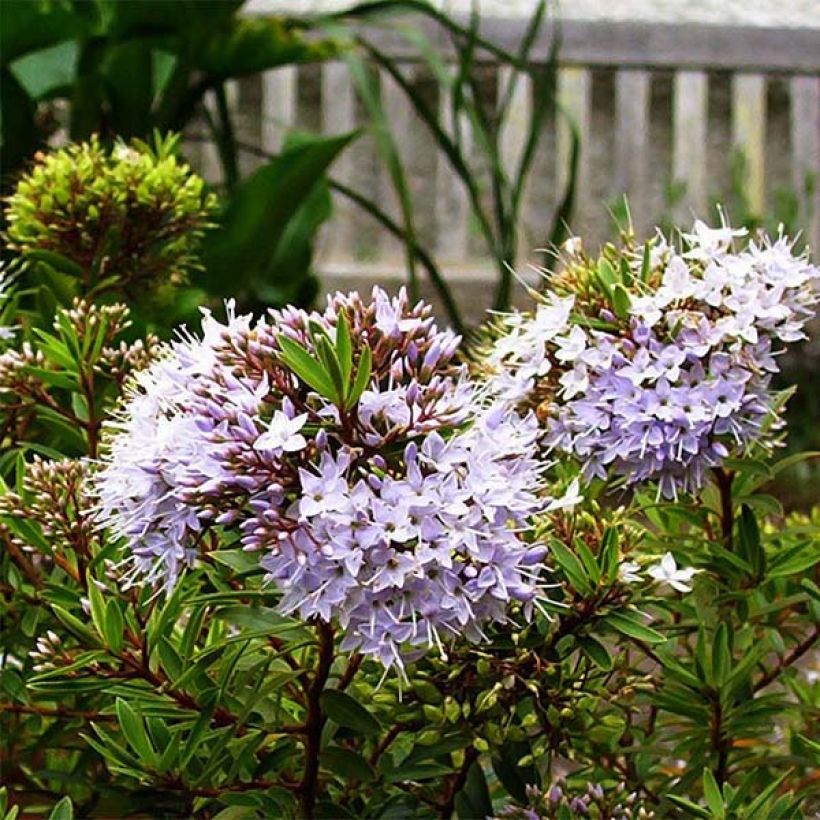

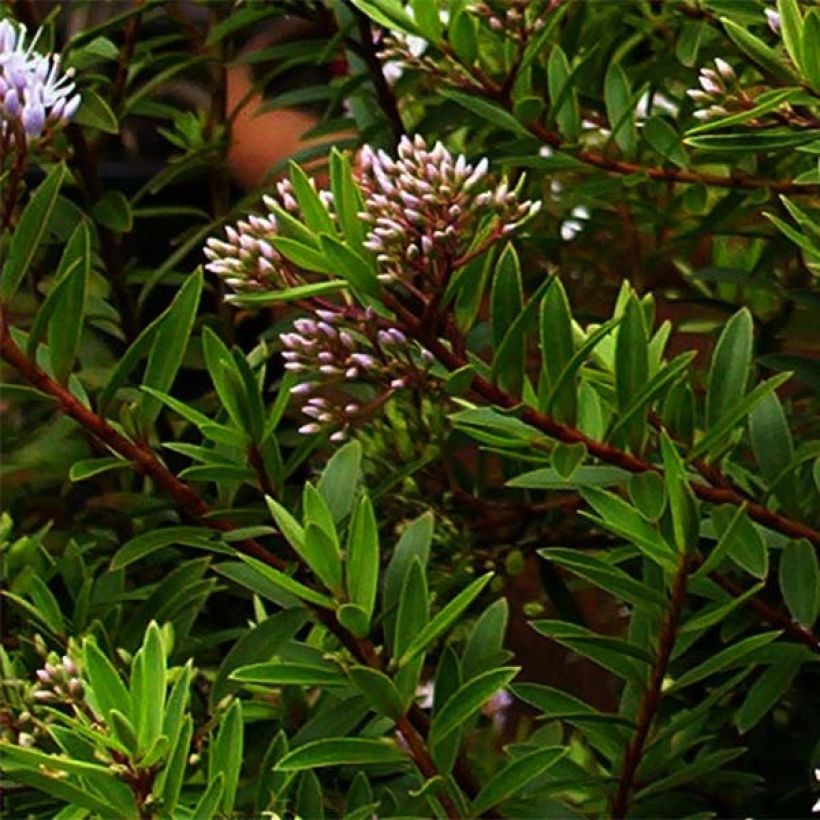

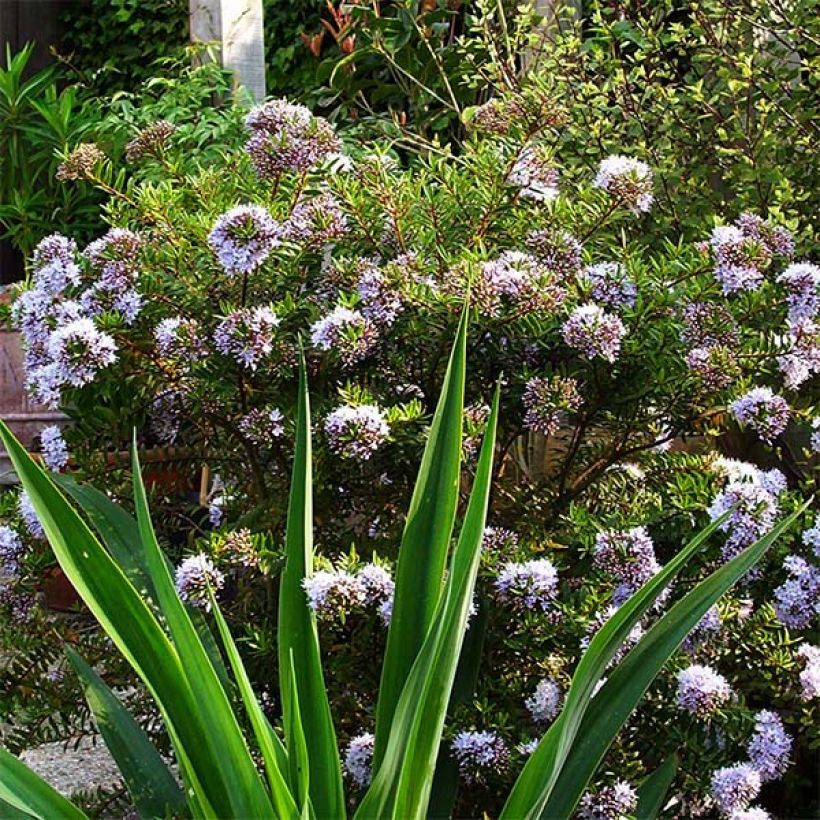

Plant habit
Flowering
Foliage
Botanical data
Hebe
diosmifolia
Scrophulariaceae
Shrubby Veronica, Speedwell shrub
Oceania
Other Hebe - Shrubby Veronica
View all →Planting and care
Hebe diosmifolia is preferably planted in spring in a cool climate, or in October in warmer, not too arid regions. It prefers a sunny site and well-drained, even sandy, light, slightly chalky, sufficiently deep and well-loosened soils, remaining just moist in summer. This plant tolerates sea spray fairly well, more than 100 m (330 ft) from the shore. In gardens with heavy soils and a wet climate, Hebes should be reserved for rockeries or sloping banks. It enjoys a rich soil that is always well-drained. In the colder regions of Northern Europe it is necessary to protect these shrubs during winter or cultivate them in pots, bringing them indoors during periods of freezing weather. As they grow, a hedge trimmer can be useful to maintain a dense and compact habit and a tidy appearance. Prune in March-April, at the start of vegetation, removing up to two thirds from the length of the branches.
Planting period
Intended location
Care
Planting & care advice
-
, onOrder confirmed
Reply from on Promesse de fleurs
Similar products
Haven't found what you were looking for?
Hardiness is the lowest winter temperature a plant can endure without suffering serious damage or even dying. However, hardiness is affected by location (a sheltered area, such as a patio), protection (winter cover) and soil type (hardiness is improved by well-drained soil).

Photo Sharing Terms & Conditions
In order to encourage gardeners to interact and share their experiences, Promesse de fleurs offers various media enabling content to be uploaded onto its Site - in particular via the ‘Photo sharing’ module.
The User agrees to refrain from:
- Posting any content that is illegal, prejudicial, insulting, racist, inciteful to hatred, revisionist, contrary to public decency, that infringes on privacy or on the privacy rights of third parties, in particular the publicity rights of persons and goods, intellectual property rights, or the right to privacy.
- Submitting content on behalf of a third party;
- Impersonate the identity of a third party and/or publish any personal information about a third party;
In general, the User undertakes to refrain from any unethical behaviour.
All Content (in particular text, comments, files, images, photos, videos, creative works, etc.), which may be subject to property or intellectual property rights, image or other private rights, shall remain the property of the User, subject to the limited rights granted by the terms of the licence granted by Promesse de fleurs as stated below. Users are at liberty to publish or not to publish such Content on the Site, notably via the ‘Photo Sharing’ facility, and accept that this Content shall be made public and freely accessible, notably on the Internet.
Users further acknowledge, undertake to have ,and guarantee that they hold all necessary rights and permissions to publish such material on the Site, in particular with regard to the legislation in force pertaining to any privacy, property, intellectual property, image, or contractual rights, or rights of any other nature. By publishing such Content on the Site, Users acknowledge accepting full liability as publishers of the Content within the meaning of the law, and grant Promesse de fleurs, free of charge, an inclusive, worldwide licence for the said Content for the entire duration of its publication, including all reproduction, representation, up/downloading, displaying, performing, transmission, and storage rights.
Users also grant permission for their name to be linked to the Content and accept that this link may not always be made available.
By engaging in posting material, Users consent to their Content becoming automatically accessible on the Internet, in particular on other sites and/or blogs and/or web pages of the Promesse de fleurs site, including in particular social pages and the Promesse de fleurs catalogue.
Users may secure the removal of entrusted content free of charge by issuing a simple request via our contact form.
The flowering period indicated on our website applies to countries and regions located in USDA zone 8 (France, the United Kingdom, Ireland, the Netherlands, etc.)
It will vary according to where you live:
- In zones 9 to 10 (Italy, Spain, Greece, etc.), flowering will occur about 2 to 4 weeks earlier.
- In zones 6 to 7 (Germany, Poland, Slovenia, and lower mountainous regions), flowering will be delayed by 2 to 3 weeks.
- In zone 5 (Central Europe, Scandinavia), blooming will be delayed by 3 to 5 weeks.
In temperate climates, pruning of spring-flowering shrubs (forsythia, spireas, etc.) should be done just after flowering.
Pruning of summer-flowering shrubs (Indian Lilac, Perovskia, etc.) can be done in winter or spring.
In cold regions as well as with frost-sensitive plants, avoid pruning too early when severe frosts may still occur.
The planting period indicated on our website applies to countries and regions located in USDA zone 8 (France, United Kingdom, Ireland, Netherlands).
It will vary according to where you live:
- In Mediterranean zones (Marseille, Madrid, Milan, etc.), autumn and winter are the best planting periods.
- In continental zones (Strasbourg, Munich, Vienna, etc.), delay planting by 2 to 3 weeks in spring and bring it forward by 2 to 4 weeks in autumn.
- In mountainous regions (the Alps, Pyrenees, Carpathians, etc.), it is best to plant in late spring (May-June) or late summer (August-September).
The harvesting period indicated on our website applies to countries and regions in USDA zone 8 (France, England, Ireland, the Netherlands).
In colder areas (Scandinavia, Poland, Austria...) fruit and vegetable harvests are likely to be delayed by 3-4 weeks.
In warmer areas (Italy, Spain, Greece, etc.), harvesting will probably take place earlier, depending on weather conditions.
The sowing periods indicated on our website apply to countries and regions within USDA Zone 8 (France, UK, Ireland, Netherlands).
In colder areas (Scandinavia, Poland, Austria...), delay any outdoor sowing by 3-4 weeks, or sow under glass.
In warmer climes (Italy, Spain, Greece, etc.), bring outdoor sowing forward by a few weeks.






























